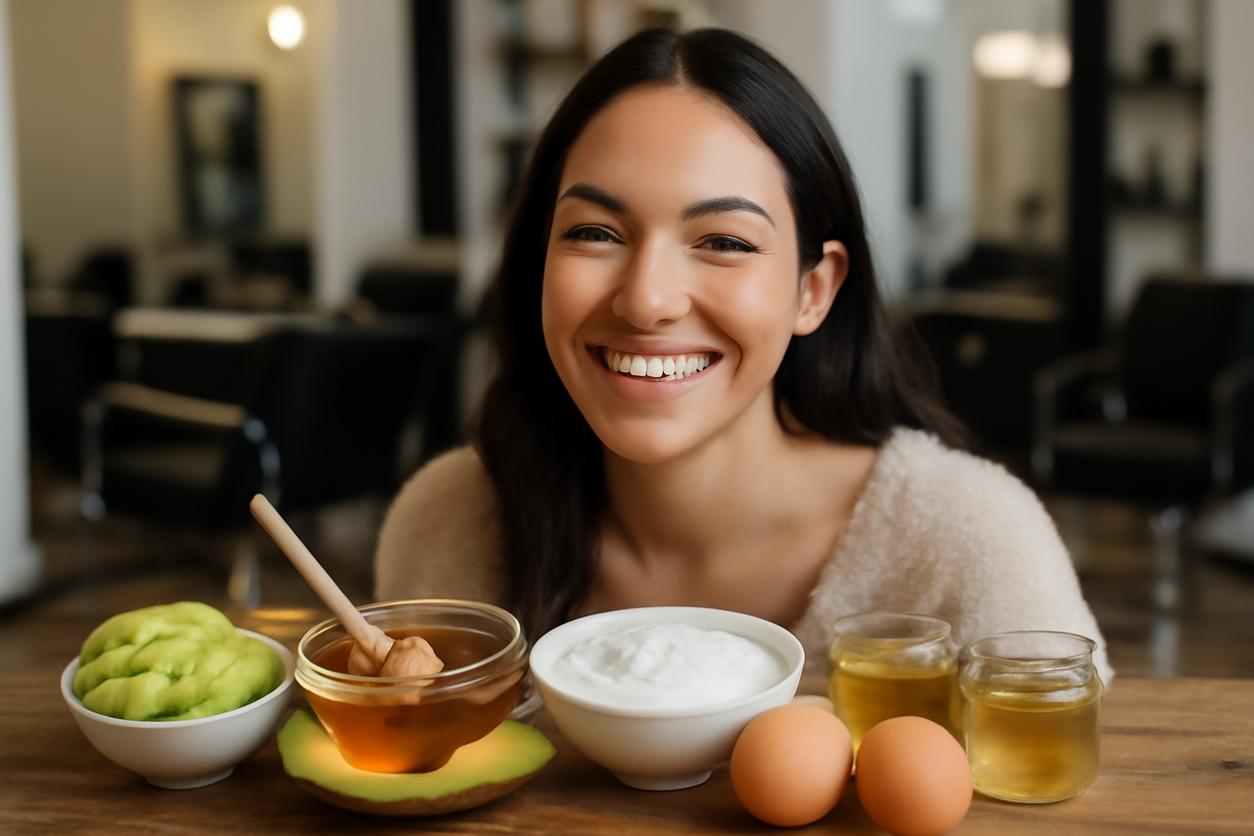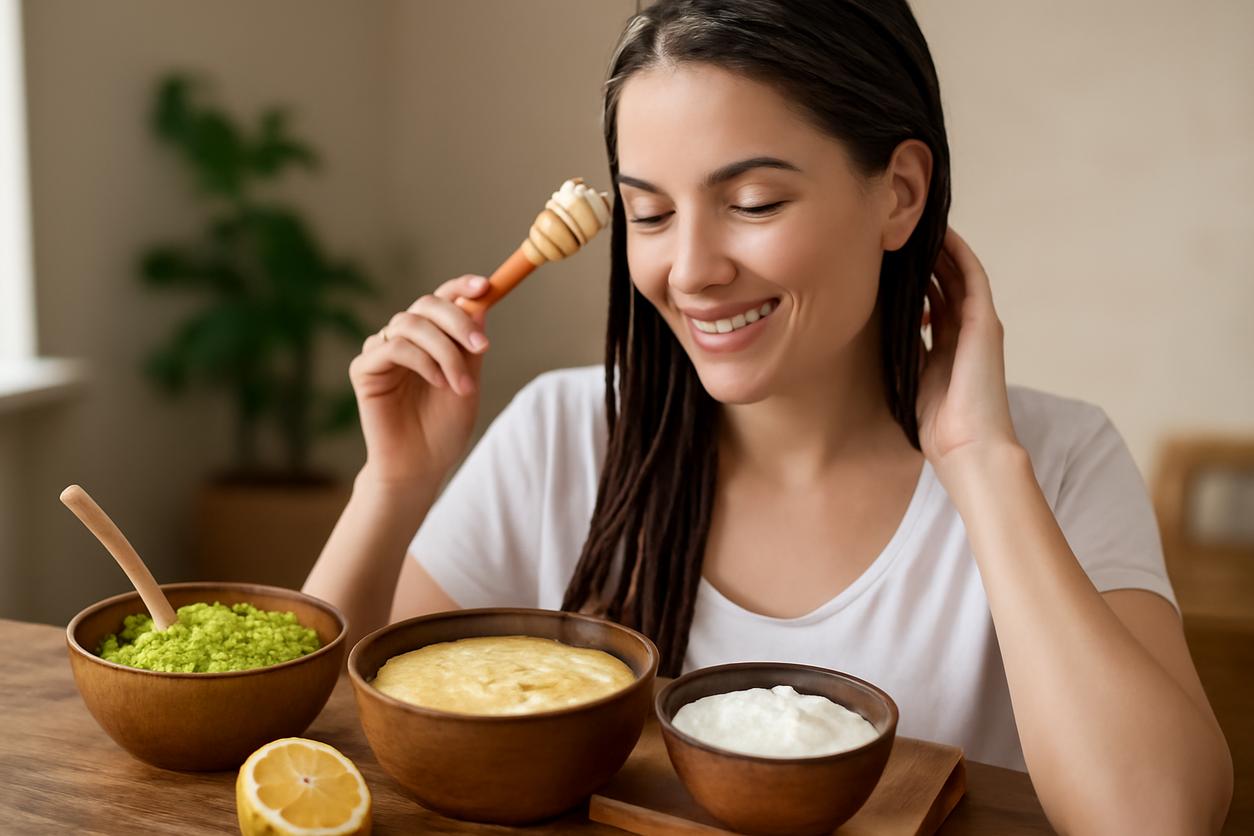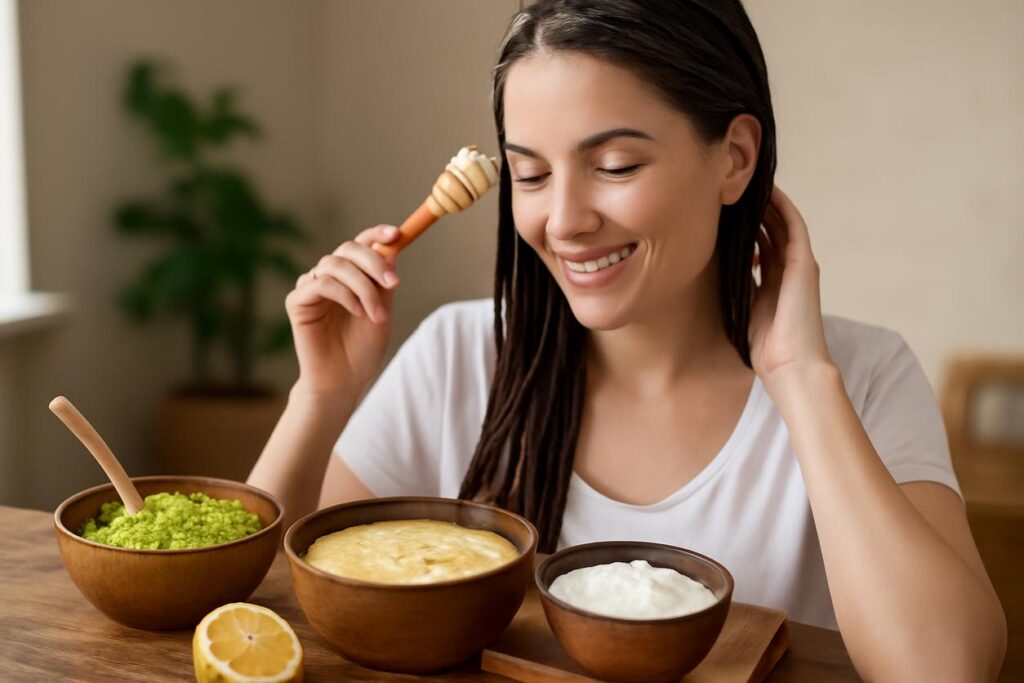Table of Contents
- Why evening hair habits boost hair health
- Quick evening assessment: your hair type and goals
- Gentle pre-bed prep: brushing, detangling and scalp care
- Overnight treatments by hair type
- DIY overnight masks: step-by-step recipes
- Nighttime protective styling and pillowcase choices
- How to wake up and rinse: morning finish techniques
- Troubleshooting common overnight issues
- Weekly and monthly night rituals to scale results
- When to consult a professional stylist or trichologist
- Quick reference: 7-night sample routines
Why evening hair habits boost hair health
You already know that a good night’s sleep is essential for your mind and body, but have you considered what it can do for your hair? Overnight hair care is more than just a trend; it’s a strategic approach to achieving healthier, more manageable hair by leveraging the body’s natural restorative processes. While you rest, your body is in peak repair mode, and this includes your hair follicles and strands.
During the day, your hair is exposed to a barrage of stressors: UV rays, pollution, humidity, and physical friction. The night offers an uninterrupted window of several hours for treatments to penetrate deeply without these environmental interferences. This extended contact time allows conditioners, oils, and serums to work their magic, delivering nutrients and moisture far more effectively than a quick 5-minute shower mask. Scientific haircare research supports the importance of consistent routines for maintaining the integrity of the hair cuticle. By adopting a nighttime hair routine, you are essentially creating the perfect environment for repair and rejuvenation, ensuring you wake up with hair that is smoother, stronger, and more vibrant.
Quick evening assessment: your hair type and goals
Before you dive into any treatment, the first step in effective overnight hair care is understanding your starting point. Hair is not one-size-fits-all, and what works for one person might not work for another. Take a moment each evening to assess your hair’s current state and your long-term goals. Are you battling dryness? Seeking more volume? Trying to preserve your curls or protect your color? Identifying your primary goal will guide your entire routine.
Signs to watch for by texture
Use this quick guide to identify your hair’s needs:
- Fine Hair: Your strands are thin in diameter. It may get oily quickly at the roots and struggle to hold a style. Your primary goal is likely volume and strength without weighing hair down.
- Thick or Coarse Hair: Your individual strands are wider, and you have a lot of them. This hair type is prone to dryness, frizz, and can feel rough. Your main goal is intense hydration and smoothing.
- Curly Hair (from wavy to coily): Your hair has a distinct pattern. The main challenges are often frizz, dryness, and maintaining curl definition. Preservation and moisture are your top priorities.
- Color-Treated or Fragile Hair: Whether from bleach, dye, or heat styling, your hair is more porous and prone to breakage. Your goal is to repair bonds, protect from further damage, and maintain color vibrancy.
Gentle pre-bed prep: brushing, detangling and scalp care
Think of this step as the “cleansing” phase of your skincare routine—it’s non-negotiable. Going to bed with tangled, messy hair can cause significant friction and breakage overnight. A few minutes of gentle prep can make all the difference.
Step 1: Detangling. Never rip a brush through dry, tangled hair. Start at the ends and work your way up to the roots, using a wide-tooth comb or your fingers. If your hair is particularly knotty, a light spritz of a leave-in conditioner or even water can help add slip.
Step 2: Brushing. Once detangled, use a soft bristle brush (like boar bristle or a gentle synthetic alternative) to distribute your scalp’s natural oils (sebum) from the roots down to the ends. This is nature’s best conditioner and adds natural shine and protection.
Step 3: Scalp Care. A healthy scalp grows healthy hair. Spend 1-2 minutes gently massaging your scalp with your fingertips. This stimulates blood flow to the follicles, which can encourage healthy growth. For more information on scalp health, resources like Rich Hair UK offer valuable insights. This is also the perfect time to apply any targeted scalp serums for concerns like dryness or thinning.
Overnight treatments by hair type
Now that your hair is prepped, it’s time to apply a treatment tailored to your specific needs. The key to successful overnight hair care is choosing the right product consistency and application method.
Fine or limp hair: lightweight options
The biggest fear for fine hair is waking up with greasy, flat locks. Focus on treatments that nourish without adding weight.
- Lightweight Serums: Look for water-based or hyaluronic acid-infused hair serums. Apply a few drops to your mid-lengths and ends.
- Root-Lifting Sprays: Apply a volumizing or texturizing spray to the roots before bed to encourage lift while you sleep.
- DIY Rice Water Mist: A simple mist of fermented rice water (see recipe below) can add protein and strength without residue.
Thick or coarse hair: intense hydration methods
This hair type craves moisture and can handle richer formulas. Your goal is to seal in hydration and smooth the cuticle.
- Hair Oils: Argan, jojoba, or avocado oil are excellent choices. Warm a small amount in your palms and apply generously from the mid-lengths to ends.
- Leave-in Creams and Butters: Rich, creamy leave-in conditioners or products with shea or mango butter can be applied to damp or dry hair to deeply moisturize.
- Hair Slugging: A popular technique where you apply a light layer of oil, followed by a cream-based leave-in, and then wrap your hair to lock in maximum moisture.
Curly hair: preservation and curl definition
For curls, the overnight routine is as much about protection as it is about treatment. You want to wake up with defined, frizz-free curls, not a tangled mess.
- Leave-in Conditioner: Apply a moisturizing leave-in conditioner using the “praying hands” method to smooth it over your curl clumps.
- Curl Creams or Gels: If you need extra hold, a small amount of curl cream or a light-hold gel can help set your curls for the next day.
- Pineapple Method: Gather your curls into a very high, loose ponytail on top of your head to protect them from being crushed while you sleep.
Color-treated or fragile hair: protective steps
Damaged hair needs a balance of protein and moisture, with a focus on mending the hair’s structure.
- Bond-Building Treatments: These specialized treatments work on a molecular level to repair broken disulfide bonds in the hair shaft. Many are designed for overnight use.
- Protein-Light Leave-ins: Look for products with silk amino acids or keratin, but be careful not to overdo it (protein overload can cause stiffness). Alternate with moisture-focused products.
- Sealing Oils: Use a very light oil on your ends to prevent split ends from worsening overnight.
DIY overnight masks: step-by-step recipes
Give your hair a natural boost with these simple, effective homemade treatments. Always do a patch test before applying a new mixture to your scalp.
1. Hydrating Aloe and Honey Mask (For All Hair Types)
This mask is a moisture powerhouse. Aloe vera hydrates and soothes the scalp, while honey is a natural humectant that draws moisture into the hair.
- Ingredients: 3 tablespoons of pure aloe vera gel, 1 tablespoon of raw honey.
- Steps: Mix the ingredients until smooth. Apply to clean, damp hair, focusing on the lengths and ends. Cover with a shower cap and leave on overnight. Rinse with cool water in the morning.
2. Strengthening Green Tea and Rice Water Mist (For Fine or Oily Hair)
This lightweight mist adds strength and shine without oiliness. Green tea is rich in antioxidants, and rice water contains inositol, which helps repair damaged hair.
- Ingredients: 1/2 cup of cooled, strongly brewed green tea, 1/2 cup of fermented rice water (water left over from rinsing rice, left to sit at room temperature for 12-24 hours).
- Steps: Combine the liquids in a spray bottle. Lightly mist your hair before bed. No need to rinse in the morning unless you feel a slight residue.
3. Nourishing Avocado and Coconut Oil Mask (For Thick, Coarse, or Dry Hair)
This is an intensely deep conditioning treatment packed with fatty acids, vitamins, and minerals to fight frizz and dryness.
- Ingredients: 1/2 ripe avocado, 2 tablespoons of melted coconut oil.
- Steps: Mash the avocado until completely smooth (no lumps!). Stir in the melted coconut oil. Apply to dry hair from root to tip. Cover with a shower cap to protect your pillow and rinse thoroughly with shampoo in the morning.
Nighttime protective styling and pillowcase choices
How you secure your hair and what it rests on are just as important as the treatments you apply. The goal is to minimize friction, which leads to frizz, tangles, and breakage.
- Protective Styles: Avoid tight ponytails or buns that can cause tension and breakage. Opt for a loose braid, a low, loose bun secured with a soft scrunchie, or the “pineapple” for curly hair. These styles keep hair contained without causing stress.
- Pillowcases: This is one of the easiest and most effective changes you can make. Cotton pillowcases absorb moisture from your hair and have a rough texture that causes friction. Switching to a silk or satin pillowcase allows your hair to glide across the surface, reducing breakage and preserving your style.
- Hair Wraps and Bonnets: For extra protection, especially for curly or fragile hair, a silk or satin bonnet, scarf, or turban is ideal. It fully encases your hair, locking in treatments and preventing any friction.
How to wake up and rinse: morning finish techniques
Your morning routine is the final step in your overnight hair care. If you applied a heavy mask, you’ll need to rinse it properly. If you used a lightweight serum or just protected your hair, you may only need a quick refresh.
- For Heavy Masks (Oils, DIY Masks): Hop in the shower and rinse thoroughly with lukewarm water. You may need to shampoo once or twice to remove all residue. Always follow with a conditioner to seal the cuticle.
- For Light Serums and Leave-ins: Most lightweight products are designed to be fully absorbed and don’t need rinsing. Simply take your hair down, shake it out, and style as usual.
- Refreshing Your Style: If your hair is slightly flat or frizzy, a light mist of water or a refreshing spray can reactivate your natural pattern or style. For curls, this is a great way to bring back bounce without a full wash.
Troubleshooting common overnight issues
- “My hair feels greasy in the morning.” You may be using too much product or a product that is too heavy for your hair type. Reduce the amount you apply and concentrate it only on the ends, avoiding the scalp.
- “The product is getting all over my pillow.” Use less product and give it time to absorb before lying down. Covering your hair with a shower cap, bonnet, or turban is the best solution.
- “My hairstyle fell flat.” Your protective style might have been too loose, or your hair is too soft. Try a slightly more secure style, like two loose braids instead of one, or use a texturizing spray before bed.
Weekly and monthly night rituals to scale results
Consistency is key. A great overnight hair care routine involves a mix of daily, weekly, and monthly habits. For 2025 and beyond, think of your hair care like a fitness plan—with regular maintenance and more intensive “workouts.”
- Daily: Gentle detangling, protective styling, and using a silk/satin pillowcase.
- Weekly (1-2 times): Apply a deep conditioning treatment or a DIY mask tailored to your hair’s needs that week. This is your main treatment session.
- Monthly: Use a clarifying scalp scrub or treatment to remove product buildup and reset your scalp’s health, creating a clean slate for your nightly products to work effectively.
When to consult a professional stylist or trichologist
While an at-home overnight hair care routine can solve many issues, some problems require expert help. You should consider booking an appointment if you experience:
- Persistent scalp issues like severe dandruff, itching, or pain.
- Sudden or significant hair loss.
- Hair breakage that doesn’t improve with conditioning treatments.
- Damage that you suspect needs a professional-grade treatment or a significant haircut.
A stylist can provide treatments and cuts to manage damage, while a trichologist (a hair and scalp specialist) can diagnose underlying health-related issues.
Quick reference: 7-night sample routines
Use these templates as a starting point. Adjust based on how your hair responds.
| Night | Goal: Intense Hydration (for Dry/Thick Hair) | Goal: Volume and Strength (for Fine Hair) | Goal: Curl Definition and Protection |
|---|---|---|---|
| 1 | Light oil on ends, loose braid, silk pillowcase | Detangle, scalp massage, silk pillowcase | Apply leave-in, “pineapple” style, satin bonnet |
| 2 | Hydrating leave-in cream, loose bun | Lightweight serum on ends, loose braid | Refresh with water mist, pineapple, bonnet |
| 3 | Treatment Night: Heavy oil or DIY avocado mask, shower cap | Detangle, scalp massage, silk pillowcase | Light oil on ends, pineapple, bonnet |
| 4 | (Post-wash) Light oil on ends, loose braid | Treatment Night: Green tea/rice water mist, loose braid | Treatment Night: Deep conditioner, pineapple, bonnet |
| 5 | Hydrating leave-in cream, loose bun | Lightweight serum on ends, loose braid | (Post-wash) Apply curl cream, pineapple, bonnet |
| 6 | Light oil on ends, loose braid | Detangle, scalp massage, silk pillowcase | Refresh with water mist, pineapple, bonnet |
| 7 | Rest night, just a loose braid and silk pillowcase | Rest night, just a loose braid and silk pillowcase | Rest night, pineapple and satin bonnet |
By transforming your evenings with a dedicated overnight hair care plan, you’re not adding a chore—you’re investing in your hair’s long-term health. Wake up to better hair days, every day.





